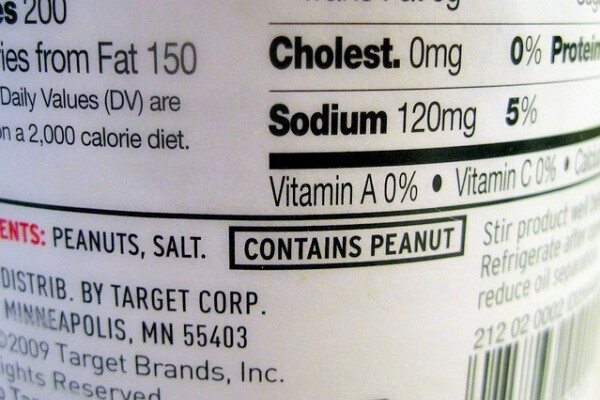What Should Be On A Food Label?

Take whatever packaged food product you have lying around, whether it's canned, bottled, bagged or boxed. Now, flip that package around and locate the "Nutritional Facts" label. You know, the one where you'll find all sorts of information regarding the product's serving size, calorie count, the amount of fat -- saturated, trans or otherwise -- and the percentage of certain vitamins the folks at the FDA recommend taking on a daily basis. While the info may seem obvious, the work of well-meaning individuals who simply want consumers to make the best-informed choice, it's really not that benign.
That's not just a label you hold before you. It is a field of battle.
See, the Nutritional Facts label is not scripture. It can be changed. While the big fight currently taking place, both in terms of news coverage and money spent, is over whether or not consumers deserve to know if the product they're buying contains GMOs, skirmishes over label turf are a regular thing.
The validity of listing trans fat on labels was the big war of the '90s and '00s, with the decision to force its inclusion on the label ultimately being partly responsible for it being squeezed from the marketplace. There's also a significant contingent who believe the base 2,000 calorie-a-day model needs to be amended. But despite the battles, the label has been relatively left alone for the past few decades, probably due to the bureaucratic mess that comes with any subtle change.
Maybe it's time to change that.
NPR recently asked the question "What's the most important thing food labels should tell us?" and one answer struck me as highly vital information for the consumer:
"I just want to know that folks are getting paid a basic living wage," says writer Tracie McMillan. For her book, "The American Way of Eating," McMillan went undercover and worked in the vegetable fields of California. There are field workers who don't even earn a minimum wage, she says. Some workers get cheated out of their pay.
I've spoken at length about the importance of paying food workers a living wage -- and why companies that do so should be applauded for their actions -- so having access to that kind of information on a food label is certainly an action I'd get behind. But it's not because the plight of the food worker tugs at my heartstrings. While that's true, my own desire for the label to add this new statistic is more based on a feeling of self-preservation.
Think about it: Which product is more apt to give you food poisoning, the one made by the company that gives their employees sick days, or the one that pays their employees a lower-than-minimum wage without benefits? More pointedly, do you want to buy food from companies whose workers are forced to come into work and handle your food when they may not be feeling all that well? That kind of information is certainly as valuable as the amount of Riboflavin in a product.
But so goes the slippery slope of what's important, and what's not. In a realm of infinite space, it wouldn't be an issue. But the food label is a finite area. Only so much information can fit there. And yet, different people need different labels in order to find out different information. One size does not fit all. So, what's the solution?
One idea that pops up now and then before, for some reason, being quickly discarded, is the concept of an all-encompassing smart-code -- most likely in the form of a QR code -- on the label. Consumers would scan the code into their phone, automatically be directed to a broad compendium of nutritional information and corporation policies, and find whatever's relevant to them. The only seeming issue with this plan is the barrier of entry to those with lower income. But that problem could be solved simply by providing each grocery store with a mini smart-code scanner station, not unlike the barcode price scanners that have become the norm.
Meaning, if any young computer programming entrepreneur is looking for a way to change the world, there it is.


